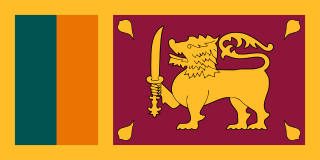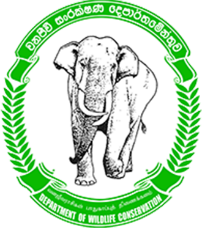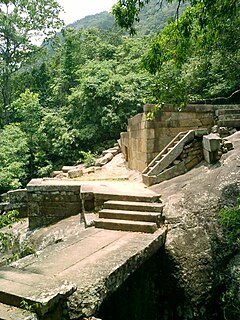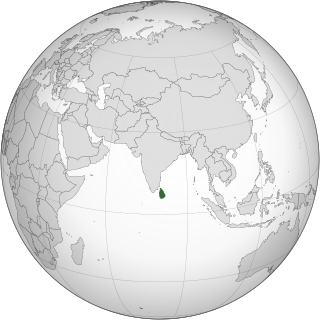
Sri Lanka, officially the Democratic Socialist Republic of Sri Lanka, is an island country in South Asia, located in the Indian Ocean southwest of the Bay of Bengal and southeast of the Arabian Sea. Sri Lanka has been called “the pearl of the Indian ocean” because of its shape and location. It is geographically separated from the Indian subcontinent by the Gulf of Mannar and the Palk Strait. Sri Jayawardenepura Kotte is its legislative capital, and Colombo is its largest city and centre of commerce.
The conservation movement, also known as nature conservation, is a political, environmental, and social movement that seeks to protect natural resources, including animal and plant species as well as their habitat for the future. Evidence-based conservation seeks to use high quality scientific evidence to make conservation efforts more effective.

The Global Young Greens (GYG) is an emerging global organisation supporting and consolidating the efforts of young people working towards social justice, ecological sustainability, grassroots democracy and peace. GYG is a joint project of over 70 youth organisations and many hundreds of individuals, including the Federation of Young European Greens, Asia Pacific Young Greens Network, Cooperation and Development Network Eastern Europe, Young Volunteers for the Environment and others. GYG is a non-profit organisation under Belgian law.
Bright green environmentalism is an ideology based on the belief that the convergence of technological change and social innovation provides the most successful path to sustainable development.
The Department of Forest Conservation is a non-ministerial government department responsible for forestry in Sri Lanka. Its mission is to protect and expand Sri Lanka's forests and woodlands. The head of the department is the Conservator General, Mr.Sathurusinghe. It comes under the purview of the Ministry of Environment and Natural Resources.

Deforestation is one of the most serious environmental issues in Sri Lanka. In the 1920s, the island had a 49 percent forest cover but by 2005 this had fallen by approximately 26 percent. Between 1990 and 2000, Sri Lanka lost an average of 26,800 ha of forests per year. This amounts to an average annual deforestation rate of 1.14%. Between 2000 and 2005 the rate accelerated to 1.43% per annum. However, with a long history of policy and laws towards environmental protection, deforestation rates of primary cover have actually decreased 35% since the end of the 1990s thanks to a strong history of conservation measures. The problem of deforestation in Sri Lanka is not as significant in the southern mountainous regions as it is in northern and lowland southern Sri Lanka, largely due to the nature of environmental protection.

The Department of Wildlife Conservation is a non-ministerial government department in Sri Lanka. It is the government department responsible for maintaining national parks, nature reserves and wildlife in wilderness areas in Sri Lanka. Forest reserves and wilderness areas are maintained by the Department of Forest Conservation. The head of the Department is the Director General of Wildlife Conservation, formally known as Warden. It was established in October 1949 with Captain Cyril Nicholas, MC as its first Warden.

Greenpeace USA is the United States affiliate of Greenpeace, an international environmental nonprofit organization.

The Global Greens (GG) is an international network of political parties and movements which work to implement the Global Greens Charter. It consists of various national Green political parties, partner networks, and other organizations associated with green politics.

Ritigala is a mountain in central Sri Lanka which is home to an ancient Buddhist monastery. The ruins and rock inscriptions of the monastery date back to 1st century BCE. It is located 43 km (27 mi) away from the ancient monastic city of Anuradhapura.
Fazlun Khalid is a Sri Lankan born British ecotheologian and the Founder-Director of the Islamic Foundation for Ecology and Environmental Science based in Birmingham, England. He has served as director of training at the Alliance of Religions and Conservation and as a consultant for World Wildlife Fund.
Eric D. Wikramanayake is a Sri Lankan conservationist.

Sri Lanka Ecotourism Foundation is a national association of Sri Lanka that aims to create a wide network of ecotourism actors throughout the country. The organization focuses on developing the economic and social development of rural communities through tourism.

Madhu Road National Park is a national park in northern Sri Lanka, approximately 25 km (16 mi) east of Mannar.

Environmental issues in Sri Lanka include large-scale logging of forests and degradation of mangroves, coral reefs and soil. Air pollution and water pollution are challenges for Sri Lanka since both cause negative health impacts. Overfishing and insufficient waste management, especially in rural areas, leads to environmental pollution. Sri Lanka is also vulnerable to climate change impacts such as extreme weather events and sea level rise.

Jagath Gunawardana is a lawyer, environmentalist and educator based in Sri Lanka. Gunawardana is known for his advocacy in wildlife conservation and environmental protection.

Oceanswell is Sri Lanka's first marine conservation and research education organisation and was founded by marine biologist Asha de Vos.

Environmental Foundation Limited is a public interest litigation and environmental conservation organisation. Established in 1981, EFL seeks to protect and conserve the natural environment through litigation, advocacy, awareness and youth-engagement.
Wildlife and Nature Protection Society is a conservation organisation. It is the third oldest non-governmental conservation organisation in the world and was instrumental in setting up Wilpattu National Park and Yala National Park.
This page is based on this
Wikipedia article Text is available under the
CC BY-SA 4.0 license; additional terms may apply.
Images, videos and audio are available under their respective licenses.













